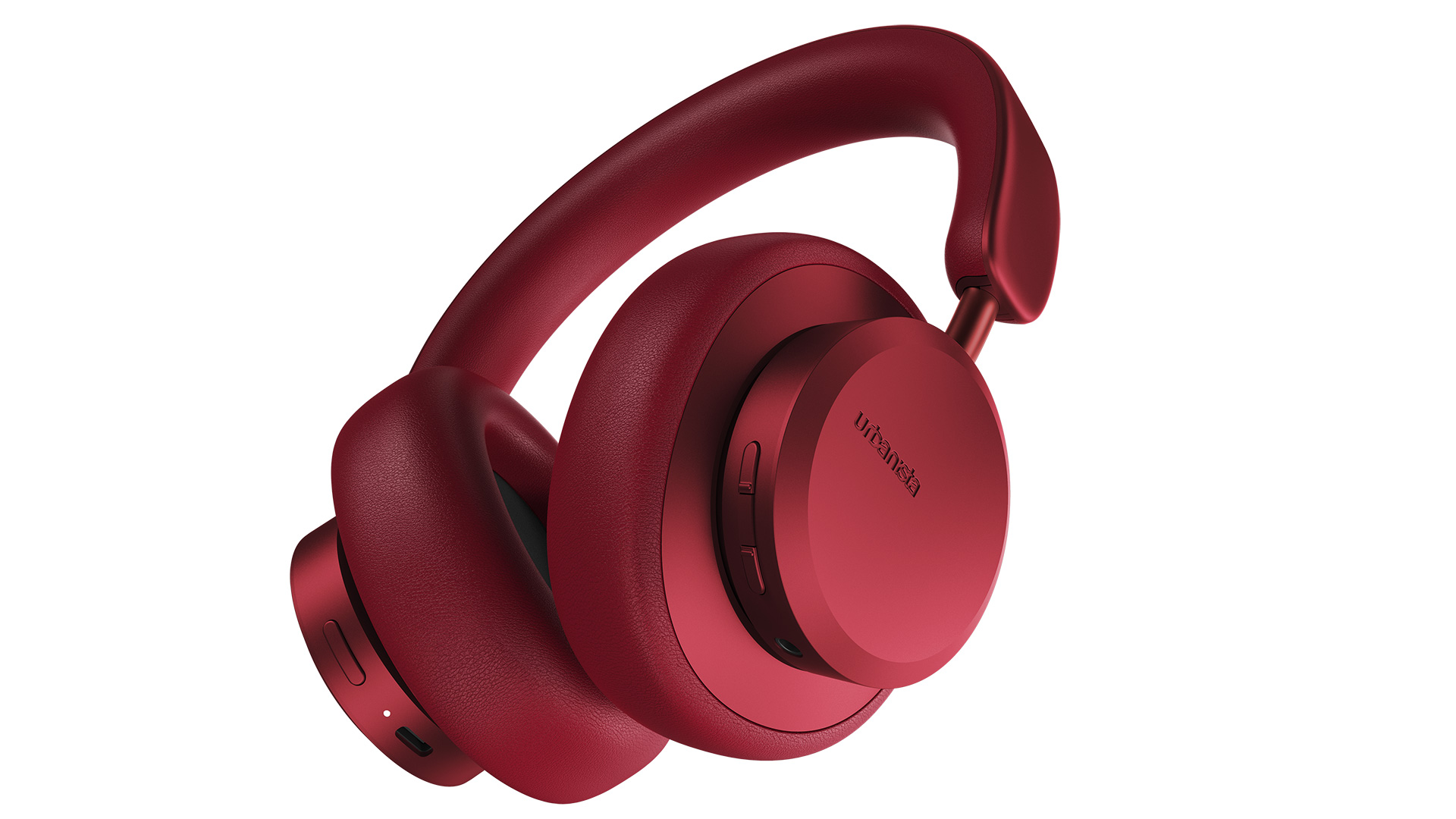Urbanista Miami review: noise cancelling headphones look and sound great
Affordable and well-made over-ear headphones with epic battery life


Everything admirable about Urbanista products, especially the price/specs ratio, is present in the Urbanista Miami noise-cancelling headphones. The sound isn't quite perfect though.
-
+
Great battery life
-
+
Stylish and well built
-
+
Generally good sound
-
-
Bass and noise-cancelling let them down a bit
Why you can trust T3

The Urbanista Miami wireless noise-cancelling over-ear headphones are the latest flagship product from the Swedish lifestyle headphones brand known for making affordable products with a bit of Scandinvian design flair. Up to a few years ago, its headphones had a habit of sounding rather thin and overly geared to an audience that listens exclusively to modern pop music. It also suffered a bit from being indistinguishable from Denmark's Urban Ears.
However, a lot of its more recent products – the London true wireless buds are a good example – have been low-cost, well designed and sounded pretty damn good as well. They still aren't likely to lure in Grado and Sennheiser fans, but there's little to complain about.
The Urbanista Miami is intended to offer a (much) more affordable alternative to the likes of Sony WH-1000XM4, but how do they hold up against today's best noise-cancelling headphones? Well, there is a lot to like about them, and a small amount to not like. Read on for my Urbanista Miami wireless noise-cancelling over-ear headphone review.
Urbanista Miami review: price and battery life
The Urbanista Miami wireless noise-cancelling over-ear headphones are available now, and in the UK they'll set you back £129 a pair. That equates to an equally appealing $149 in the United States and a similarly agreeable AU$269 for Australian customers.
A battery life of 50 hours with noise-cancelling switched off, or 40 hours with the ANC circuitry engaged, would be eye-catching at any money – and given the aggressive nature of the Urbanista Miami's pricing, those are even more startling figures. They're eminently achievable too, and without any of the book-cooking (such as listening at 25% volume) that some rival manufacturers indulge in when totting up battery life. The Miami are genuinely capable of staying with you twice around the clock before they need a sniff of mains power.
Urbanista Miami review: build quality and design
If battery life makes the Urbanista look like a bit of a bargain, the standard of build and finish only reinforces that impression. With the asking-price uppermost in your mind, it's nigh-on impossible to find fault with the way these headphones are constructed – the quality of materials they incorporate is high, the construction is sturdy. There's a degree of tactility to the contact parts that's by no means a given at this sort of price, and comfort is of a similarly unlikely nature. The headband and earpads are gently padded, and they don't give you back your own body heat for quite a while.
As far as design goes, well, it doesn't do to meddle too much with a formula that a) was established many years ago and b) insists that form must follow function. But Urbanista has made the Miami look quite distinctive, thanks to a mild angling of the earcups and a selection of colourways that range from the obvious (black, or white) to the quite lively (red, or teal).
Get all the latest news, reviews, deals and buying guides on gorgeous tech, home and active products from the T3 experts

There's been no obvious scrimping anywhere else, either. Wireless connectivity uses Bluetooth 5.0 – more than capable of making the best of your top-tier streaming service subscription – and there's voice control available from either Google Assistant or Siri.
There is a smattering of physical controls across both earcups. On the left you'll find a USB-C socket (just ten minutes on the juice will hold the Miami for two hours or so) and a button for cycling through 'noise-cancelling on/off/ambient sound boost', while on the right there's a row of three buttons covering 'power on/off/Bluetooth pairing', 'play/pause', 'answer/end/reject call', 'listen up, voice assistant', 'volume up/down' and 'skip forwards/backwards'. These three controls are far too close together and badly differentiated – press one and you won't be sure what's going to happen until it's happened.
Urbanista Miami review: sound quality
Up to this point, the Urbanista Miami is a confident, self-possessed sort of product. But once some music is coming in via Bluetooth, that composure starts to wobble just a little.
All is well at the top of the frequency range, where even a fairly squashed digital audio file from Spotify's free tier enjoys a bit of treble positivity and substance. The transition down to the midrange is smoothly accomplished, too, and – despite overall detail levels not being all they might – singers come across with almost all of their character and intent intact.
It's below here that the significant troubles lurk, though. In what is an unfortunate first for Urbanista, the bass response of the Miami is altogether too confident and assertive. Low frequencies muscle their way to the front of the stage, intimidating the lower portion of the midrange and dragging at tempos. The same lack of outright detail retrieval is evident here too, which means not only is there too much bass but it's short of texture too.

It goes without saying that this is a bit of a pity, because in most other respects the Miami outperform their price to a lesser or greater extent. The soundstage they generate is big, well defined and gives everything – even the limelight-hogging bass frequencies – space to operate. There's plenty of dynamic headroom available, which means those last-chorus crescendos come across well. Despite the low end's efforts at sabotage, the Urbanistas are quite expressive where rhythms are concerned. Tonally, the Miami strike an impressively natural and neutral balance. Taken as a whole, there's plenty to admire about the sound the Urbanista make – and that goes double if you're partial to a bit of low-frequency overstatement.
The active noise-cancelling is in the same 'pretty good in general terms' camp. Switch it on and external sounds are most definitely subdued, although they're not eradicated and there's just the tiniest suggestion of a counter-signal being introduced. 'Ambient Sound Mode' most definitely boosts external sounds – and if you're not embarrassed to hold a conversation while still wearing a pair of headphones, it's a useful feature. It doesn't lower the volume of the music you're listening to, though, so if you've cranked up the volume you'll probably need to take the Miami off in order to have a chat anyway.
Urbanista Miami: verdict
There's so much that's impressive about the Urbanista Miami headphones – battery life, build quality, standard of finish, comfort, quite a lot of the sound they make – that it seems almost hard-hearted to find fault with them. But you'll have to be prepared for slightly wonky, slightly detail-light sound if you want some of the Miami action.
Also consider
We get it: you're in the market for affordable headphones with active noise-cancelling. Well, how about JBL's affordable entry, which costs even less cash than the Urbanista? A solid alternative in our review, price comparison real-time widget below for your viewing pleasure.
If you're wondering how we test our headphones here at T3 – or indeed any gadgets, and believe us, we do cover an awful lot – then head over to our How We Test page for the full lowdown on our process and ethics.
Simon Lucas is a freelance technology journalist and consultant, with particular emphasis on the audio/video aspects of home entertainment. Before embracing the carefree life of the freelancer, he was editor of What Hi-Fi? magazine and website – since then, he's written for titles such as Wired, Metro, the Guardian and Stuff, among many others. Should he find himself with a spare moment, Simon likes nothing more than publishing and then quickly deleting tweets about the state of the nation (in general), the state of Aston Villa (in particular) and the state of his partner's cat.
